By Renato Winkler, Picarro Application Scientist -- Some weeks ago, I was invited to join and assist an International Atomic Energy Agency Regional Training Course on nitrogen management. The two week technical course was hosted at the IAEA laboratory in Seibersdorf outside Vienna, and was held in parallel to the Global Soil Week hosted at the IAEA headquarters in Vienna. Approximately 15 participants from Middle Eastern countries came to Seibersdorf to learn about the importance of proper nitrogen management in agriculture, and in particular how scientific methods and Picarro technology can help to better understand the nitrogen cycle. Nitrogen management in the agricultural sector is very important, since improper fertilization leads to increased nitrous oxide (N2O) concentrations. N2O is a strong greenhouse gas with a large global warming potential.
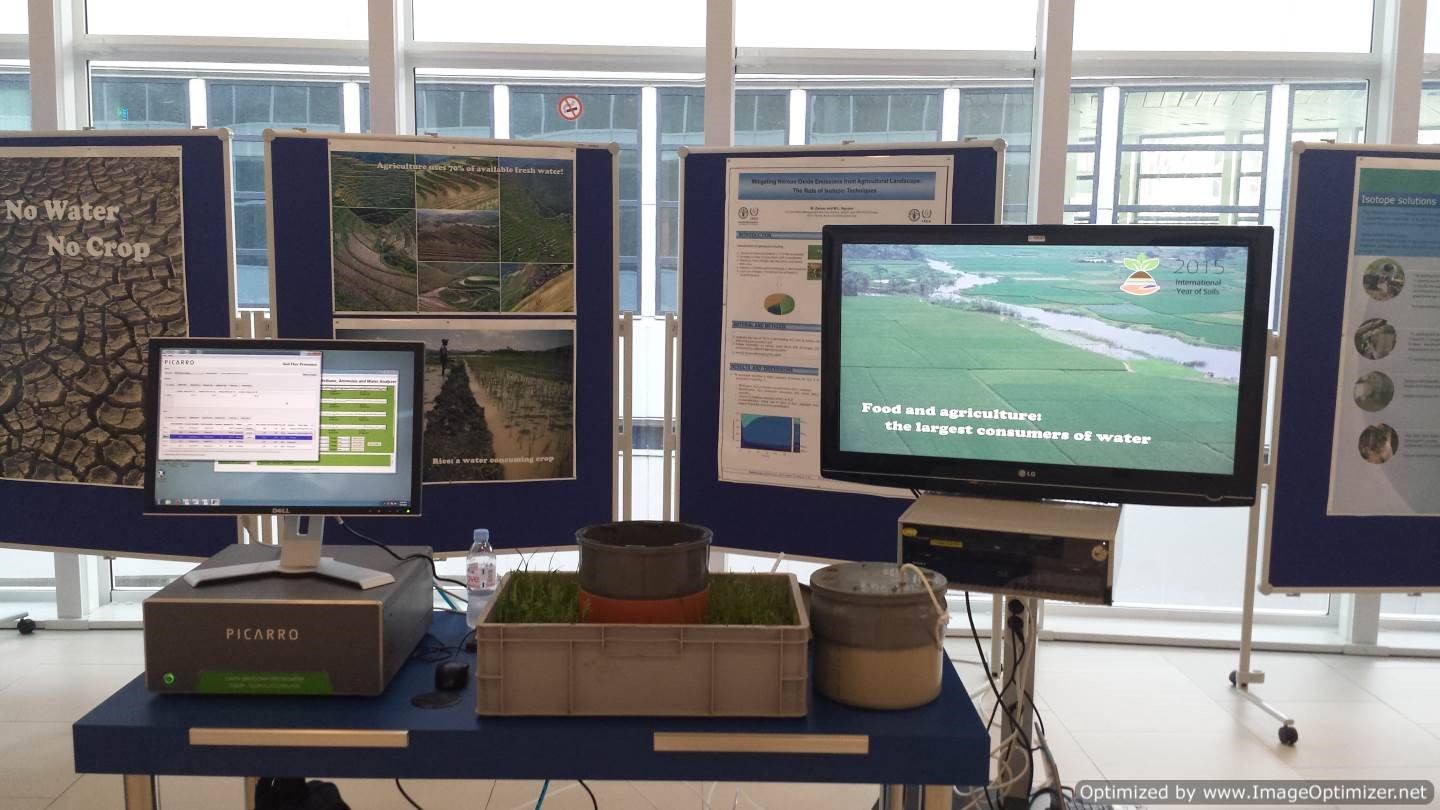
The Picarro G2508, a simultaneous five species concentration instrument for measuring CO2, CH4, N2O, NH3 and H2O, at the Global Soil week exhibition at the IAEA headquarters in Vienna.
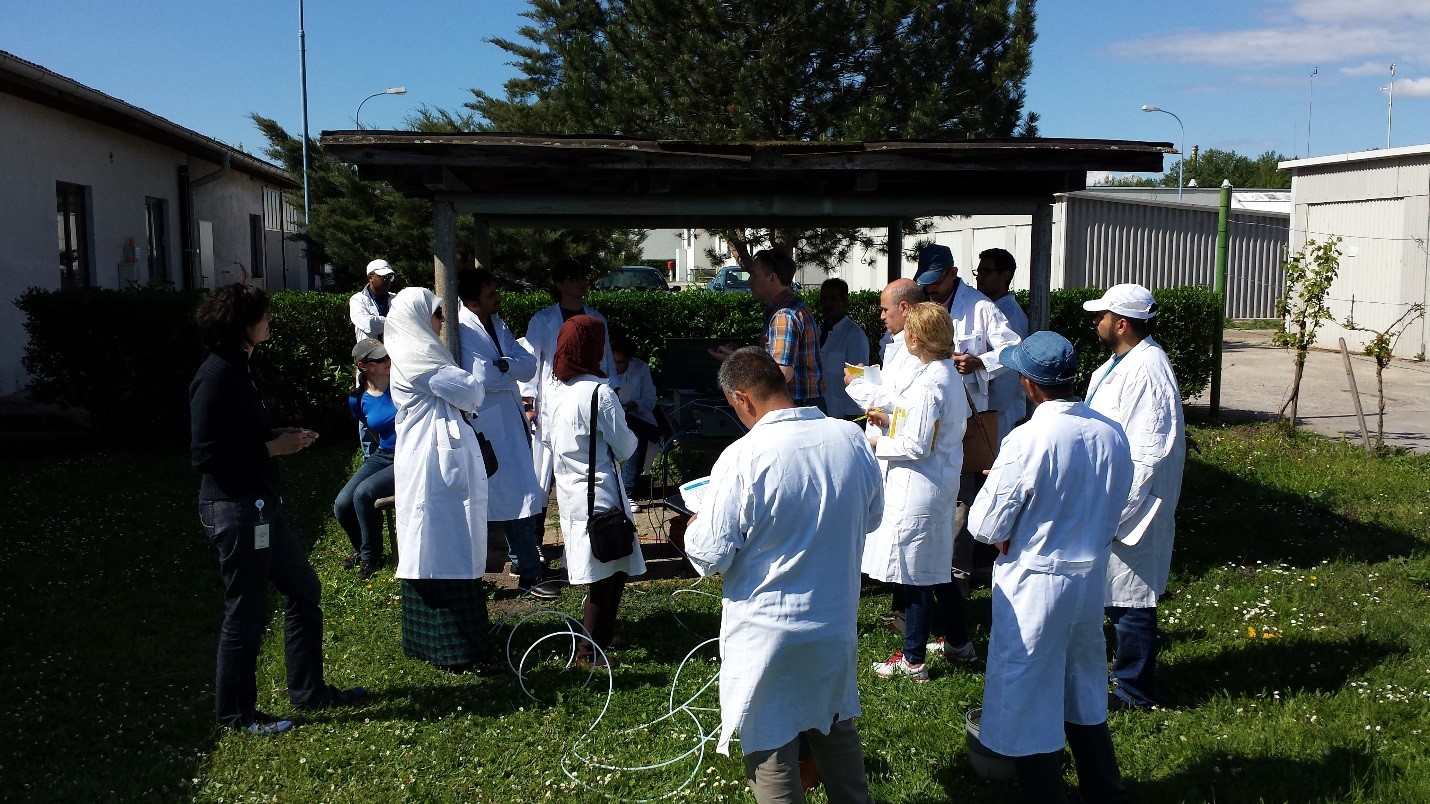
After an introduction about soil and nitrogen management in the IAEA class room, the participants were happy to profit from the nice weather and do some hands on soil science in the field.
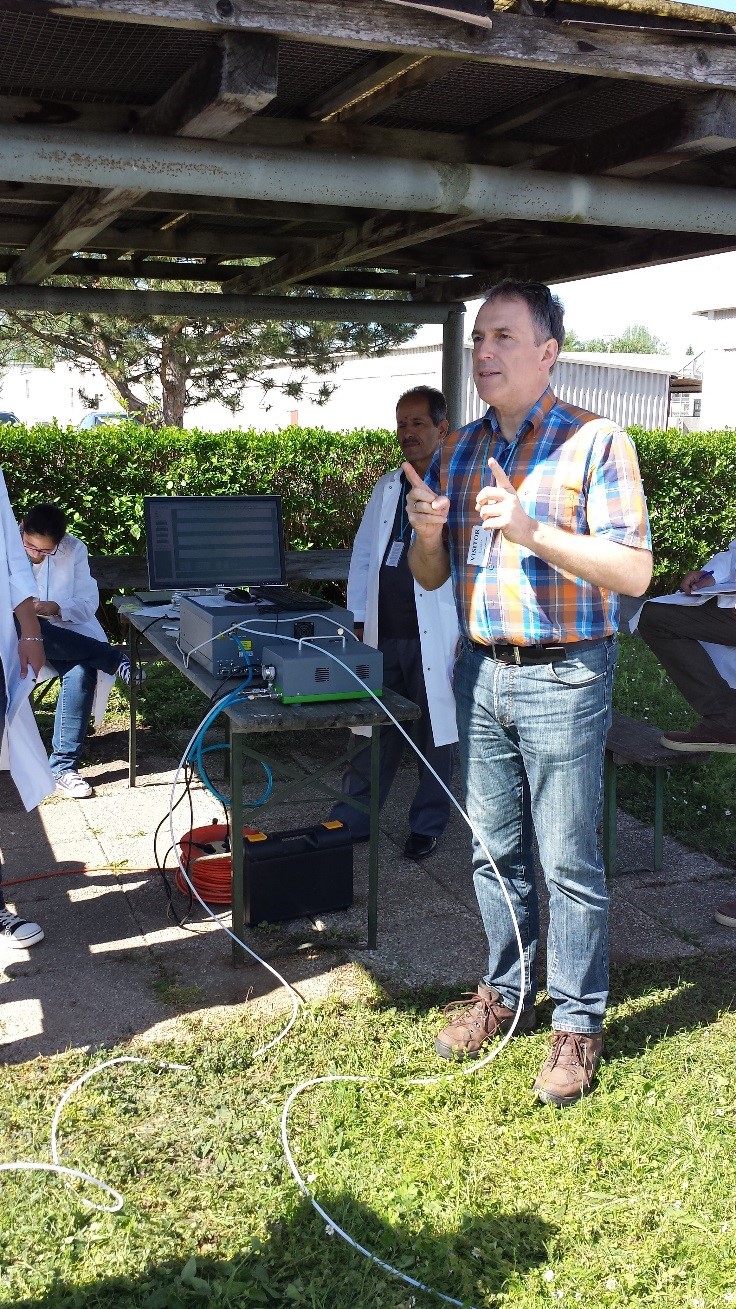
During the workshop, I collaborated closely with Professor Christoph Müller from the University of Giessen in Germany. Christoph is professor in plant ecology and also acts as a scientific adviser to the Joint IAEA/FAO Programme on Soil and Water Management. Besides being a well-known soil scientist Christoph is also a great lecturer, and together we setup a nice field work experience for the participants of the training course.
Professor Christoph Müller from the University in Giessen, Germany, in his role as a scientific counselor and teacher.
Experimental setup
The Picarro five species analyzer (G2508), simultaneously measures CO2, CH4, N2O, NH3 and H2O, and is therefore a perfect fit for soil greenhouse gas flux measurements. It was set up in a closed loop configuration using an IAEA in-house made chamber coupled to the Picarro through Picarro’s closed loop package. Picarro Cavity Ring-Down Spectrometers are well suited to closed loop soil chamber applications because they are field deployable and use a leak-reduced external vacuum pump, in tandem with special fittings, to enable leak-free circulation of the sample gas between the chamber and the Picarro analyzer.
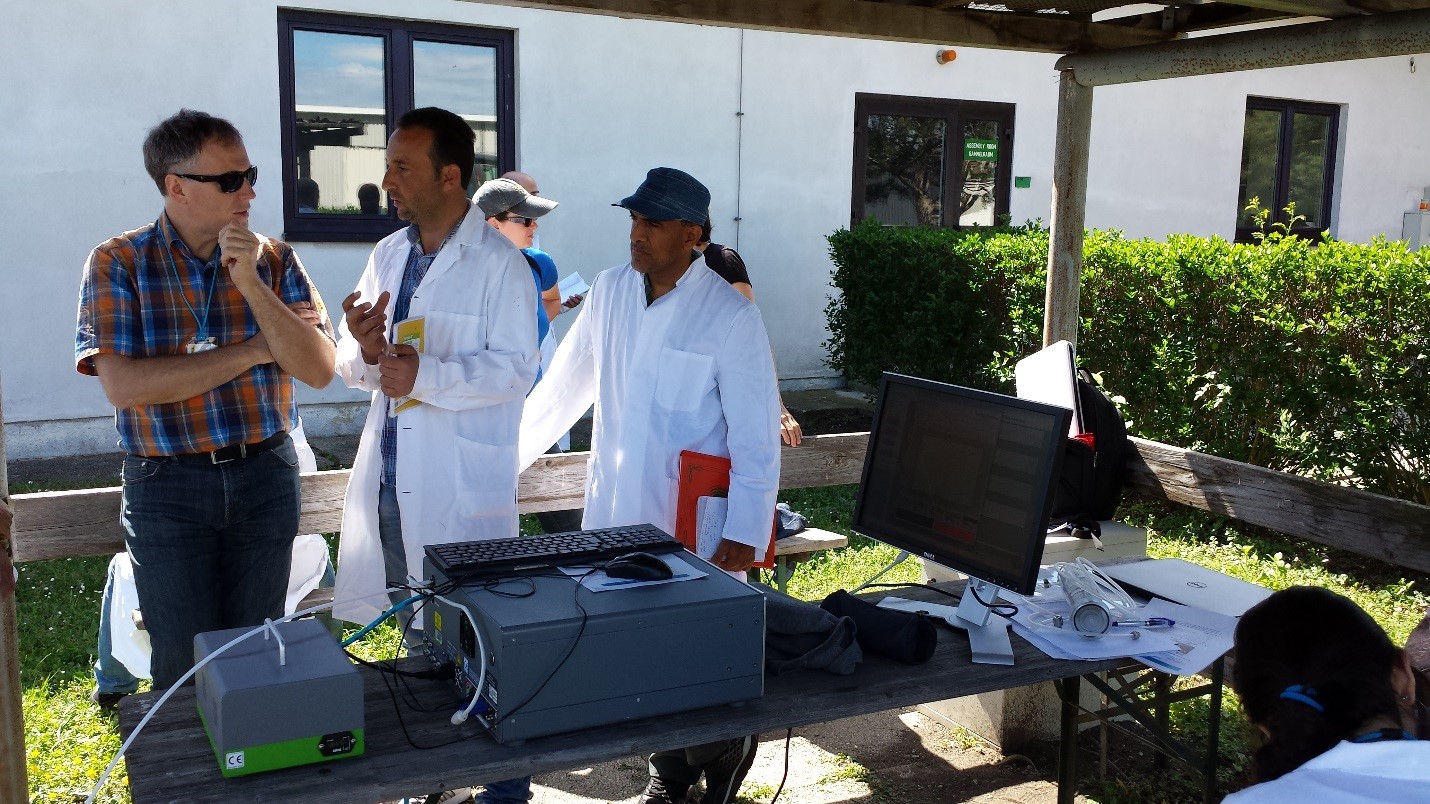
The Picarro setup outside the IAEA laboratory in Seibersdorf.
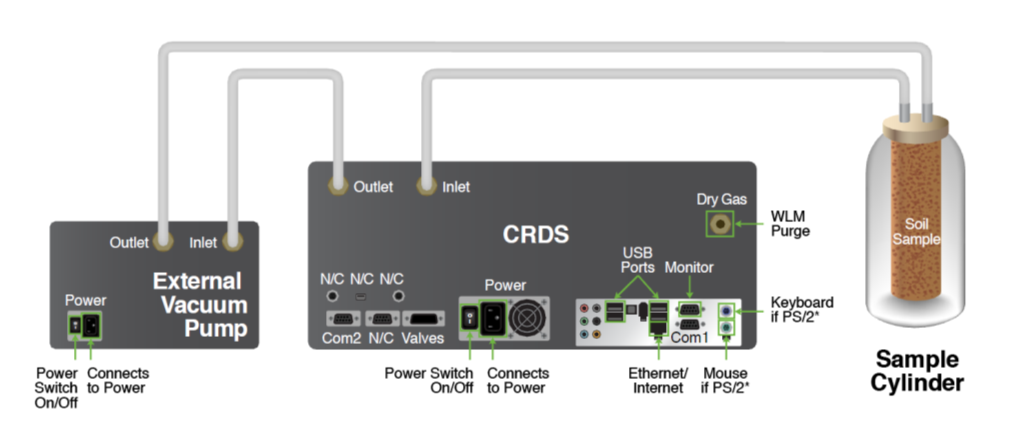
A schematic of the closed loop configuration for soil chamber measurements.
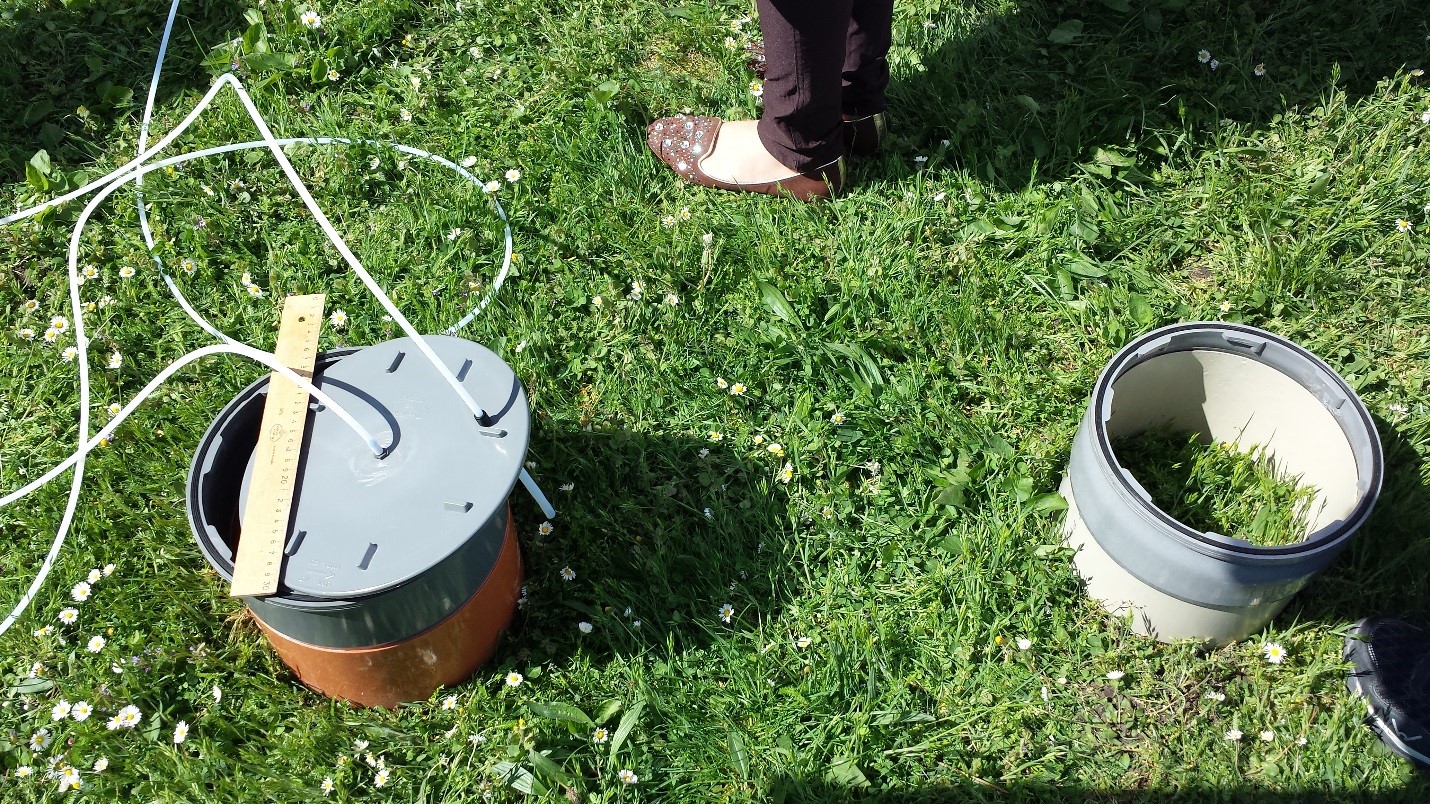
The IAEA in-house made soil chambers.
Soil greenhouse gas measurements
For our field experiments we used two chambers, which were placed nearby on grassland. The tubing connects the Picarro CRDS analyzer with the chamber in a closed loop configuration, allowing us to study the evolution of the greenhouse gases in the chamber over a measurement period of 10 to 30 minutes. In several experiments, we applied water and fertilizers to the ground area captured by the chamber and studied the effects.
Shown below are the results from an experiment where we applied urea. The increase in N2O concentration provides evidence of the partial transformation of urea to nitrous oxide during nitrification and denitrification processes. In the same experiment, we also saw enhanced bacterial and plant respiration in the dark chamber via an increase in CO2. At the same time, there was evidence of bacteria consumption of CH4 (methane concentration decreased through the experiment). These types of measurements are useful for optimizing fertilization procedures, i.e. to assess the optimal timing and amount of fertilization for a given soil type, and thereby limit unnecessary emission of N2O, a potent greenhouse gas.
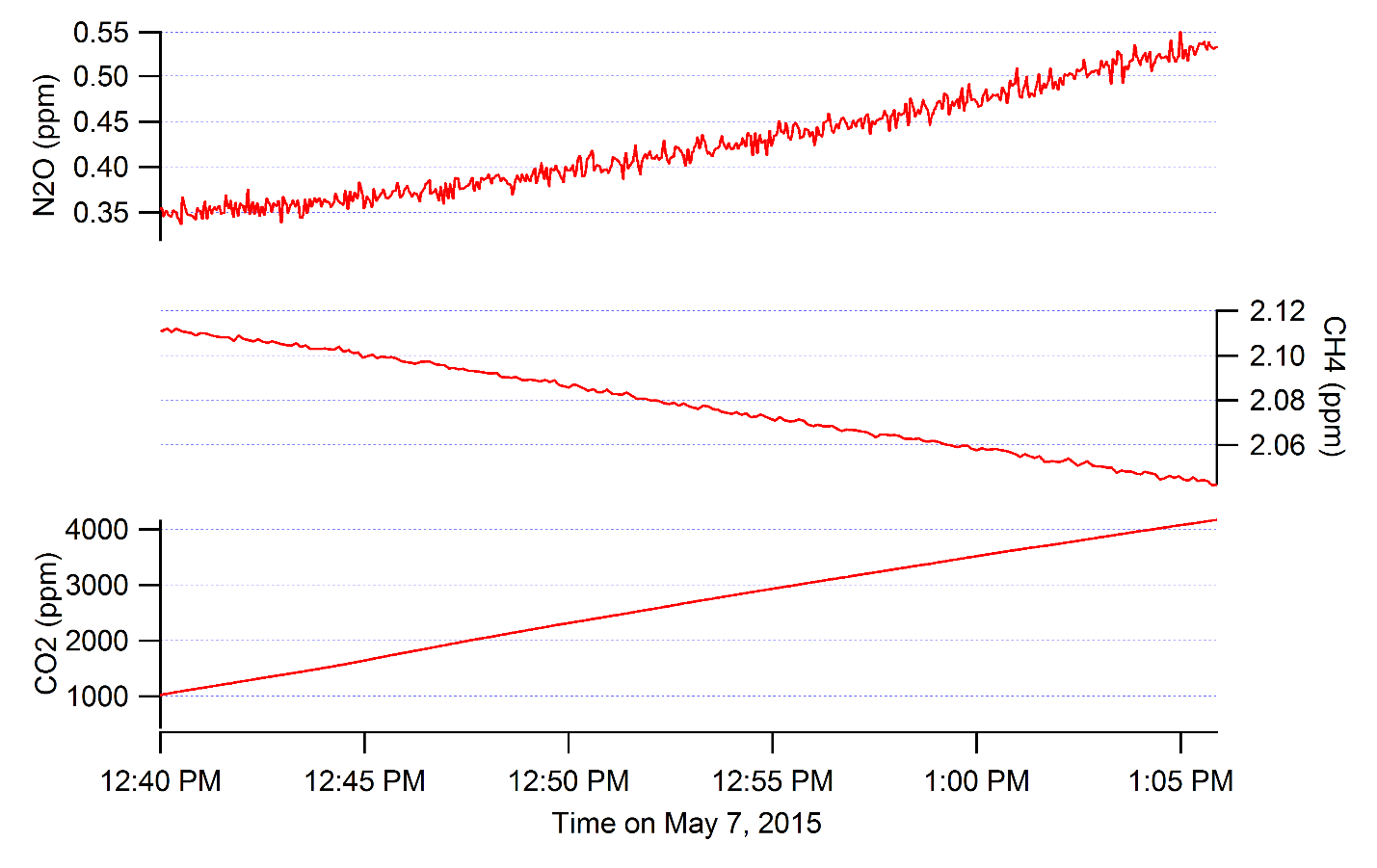
Flux data collected at Seibersdorf.
Flux calculations
In a chamber measurement of a given soil surface, air temperature and pressure, the flux of a species like N2O is proportional to the slope of the concentration curve. The slope is obtained by fitting a regression function through the set of data points and by calculating the time derivate (δC/δt) of the regression function. The flux is calculated via:

n is the number of moles of a species for time t1 and t0, A is the surface and Mwt is the molecular weight of the species. nt1-nt0 is calculated from δC/δt of the concentration measurement. During our experiment, we measured a flux of 55 µg/m2/h, 953 µg/m2/h, and -16.8 µg/m2/h respectively for N2O, CO2, and CH4.
Picarro analyzers can be coupled to commercially-available dataloggers to integrate air pressure and temperature readings during the chamber measurement, both of which are required for flux calculations. Recently Picarro developed a new Soil Flux Processor, which allows for automated soil flux calculations in real time, meaning no post processing of the data is required and the greenhouse gas flux is provided right after the soil chamber measurement.
Besides the ease of use, the Picarro Soil Flux Processor allows for an on-site quality control of the data and can therefore improve the efficiency of a field experiment.
As a Picarro Application Scientist, I really enjoyed the experience of working with IAEA staff, Professor Müller, and the course participants during my week at Seibersdorf. I hope the participants came away with useful insights into the science and technology of soil flux measurements, and that their future effort will help to improve the nitrogen management in their home countries.
If you like to learn more about the Picarro soil products and how it could be useful for your research project, please contact me at rwinkler@picarro.com.
